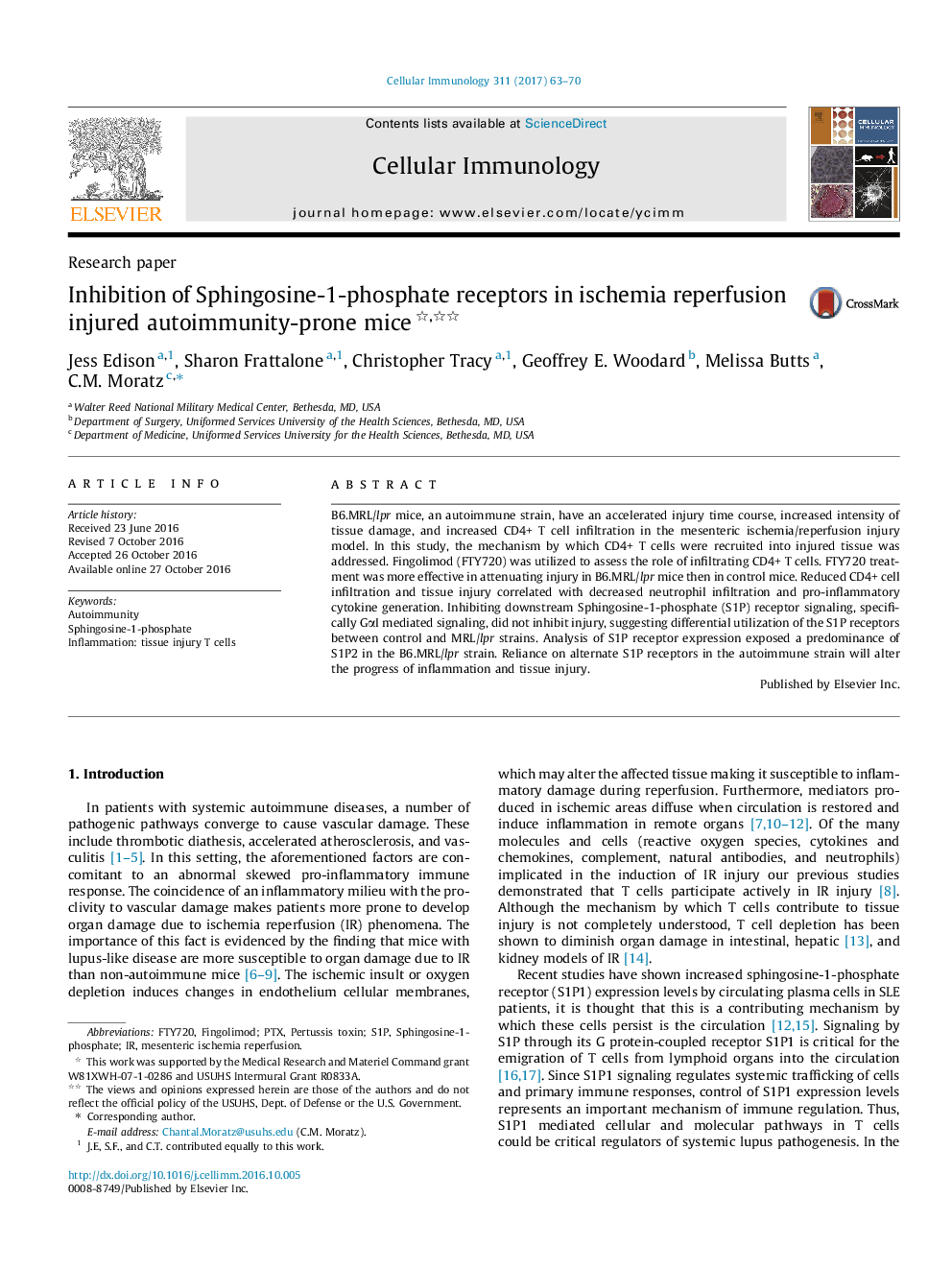| Article ID | Journal | Published Year | Pages | File Type |
|---|---|---|---|---|
| 5530751 | Cellular Immunology | 2017 | 8 Pages |
•B6.MRL/lpr display a chronic pro-inflammatory microenvironment at vascular barriers.•Inhibition of S1P Receptor signaling is efficacious in attenuating injury in the B6.MRL/lpr strain.•A shift from S1P1 to S1P2 usage by vascular endothelium is detected in the B6.MRL/lpr strain.
B6.MRL/lpr mice, an autoimmune strain, have an accelerated injury time course, increased intensity of tissue damage, and increased CD4+ T cell infiltration in the mesenteric ischemia/reperfusion injury model. In this study, the mechanism by which CD4+ T cells were recruited into injured tissue was addressed. Fingolimod (FTY720) was utilized to assess the role of infiltrating CD4+ T cells. FTY720 treatment was more effective in attenuating injury in B6.MRL/lpr mice then in control mice. Reduced CD4+ cell infiltration and tissue injury correlated with decreased neutrophil infiltration and pro-inflammatory cytokine generation. Inhibiting downstream Sphingosine-1-phosphate (S1P) receptor signaling, specifically GαI mediated signaling, did not inhibit injury, suggesting differential utilization of the S1P receptors between control and MRL/lpr strains. Analysis of S1P receptor expression exposed a predominance of S1P2 in the B6.MRL/lpr strain. Reliance on alternate S1P receptors in the autoimmune strain will alter the progress of inflammation and tissue injury.
